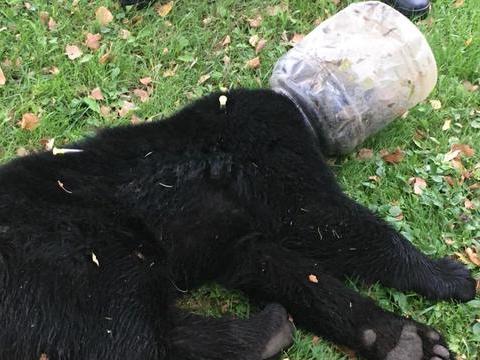Officials save bear cub with plastic jar stuck on its head after three-day pursuit
Officials were able to tranquillise the bear before removing the plastic jar

Your support helps us to tell the story
From reproductive rights to climate change to Big Tech, The Independent is on the ground when the story is developing. Whether it's investigating the financials of Elon Musk's pro-Trump PAC or producing our latest documentary, 'The A Word', which shines a light on the American women fighting for reproductive rights, we know how important it is to parse out the facts from the messaging.
At such a critical moment in US history, we need reporters on the ground. Your donation allows us to keep sending journalists to speak to both sides of the story.
The Independent is trusted by Americans across the entire political spectrum. And unlike many other quality news outlets, we choose not to lock Americans out of our reporting and analysis with paywalls. We believe quality journalism should be available to everyone, paid for by those who can afford it.
Your support makes all the difference.A black bear cub has been freed after officials in Maryland led a three-day pursuit to help the animal get a bucket unstuck from its head.
The cub was tranquillized by the Maryland Department of Natural Resources Wildlife and Heritage Service, with assistance from the Maryland Natural Resources Police, and later released back into the wild to go live its life.
A crowd of onlookers reportedly gathered when officials let the 100 pound animal go near the Wisp Resort in McHenry during the annual Autumn Glory Festival.
“Our response staff did an outstanding job dealing with this very public situation, and handled it in a most professional and responsible manner,” Paul Peditto, the director of the Wildlife and Heritage Service agency, told the Cumberland Times-News.
There are estimated to be around 600,000 black bears in North America, with sound 300,000 of those individual bears living in the United States.
The bears can be found in 40 states in the US, as well as in parts of Mexico and Canada.
The animals are very adaptable, and historically lived in virtually all wooded areas of North America. More recently, however, they have been restricted from living in wooded areas close to human populations.
They are considered to be a threatened species in the United States under the Endangered Species Act.
Join our commenting forum
Join thought-provoking conversations, follow other Independent readers and see their replies
Comments